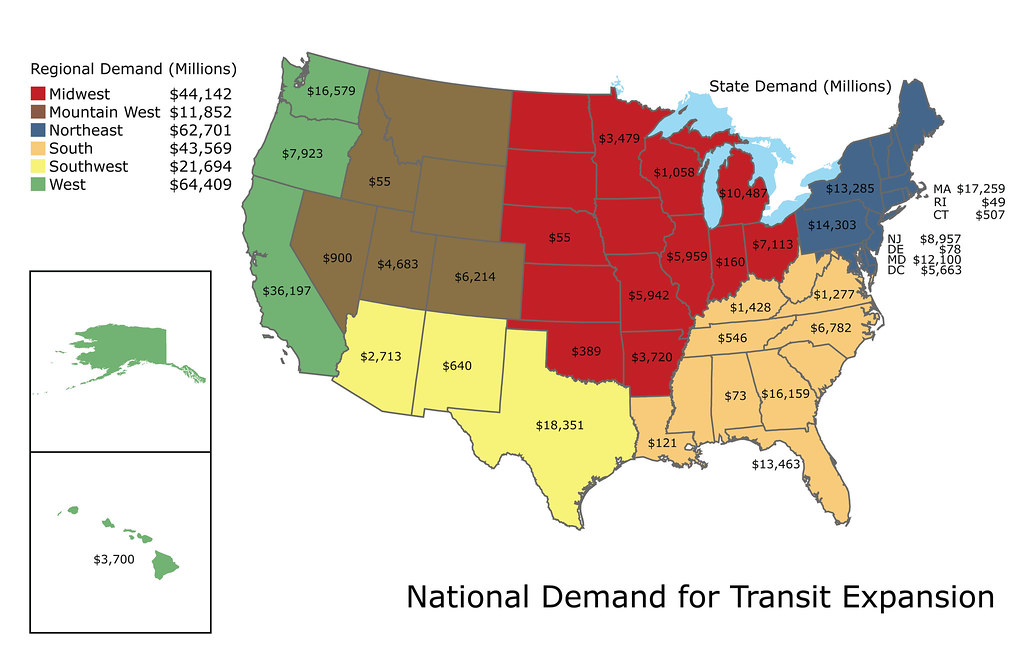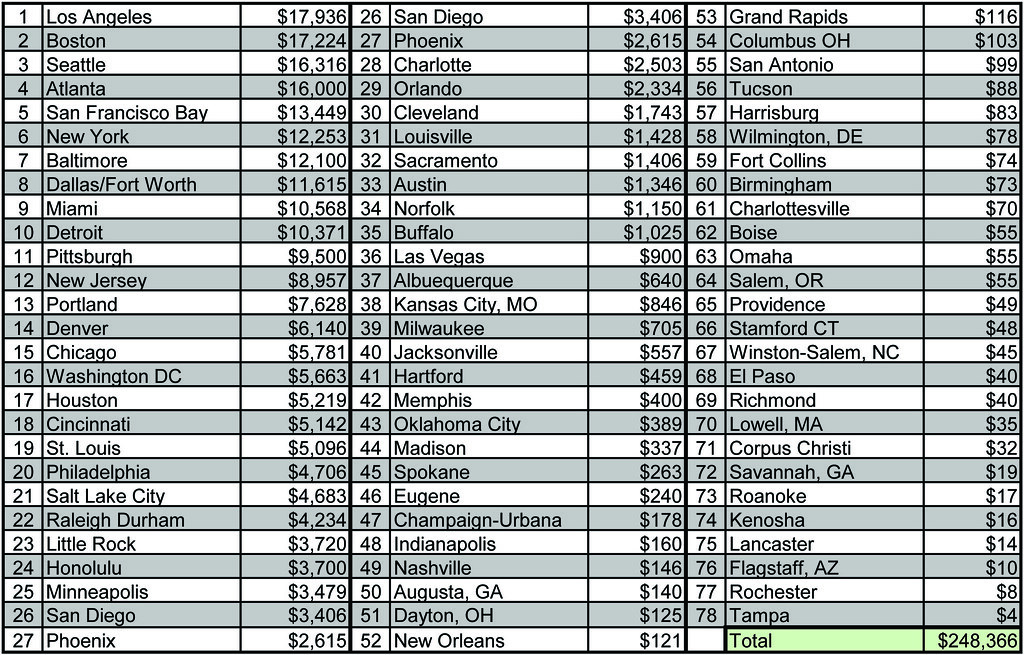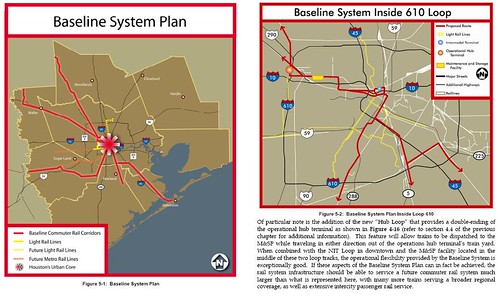Every once in a while we have to review where the TSR is going. Today let's take a short look at the leader board. Previous TSR update for the whole race can be found
here. Keep in mind legacy cities are expanding transit as well, but the cities in the TSR are those which have pushed off transit until recently and are trying to bring it back.
The leaders are far ahead of the other cities, many of which are either just building as funds come available or still in the initial stage of denial. That doesn't mean there's not time to catch up, but these leading cities are still the reason I started covering the space race. Because they were accelerating expansion far beyond the line at a time doctrine and capturing the hope that things can change and people are ready for it.
Denver -
Fastracks is still the granddaddy of expansion. The West Corridor has begun construction and the 119 new miles of rail are expected to be completed by 2016. That seems so soon, so awesomely soon in fact that folks are starting to look at the
next round of possibilities.
Houston - While not as publicized as much as the Fastracks expansion, the
Metro Solutions expansion was actually voted on before Fastracks. However it wasn't seen as such a big deal until it was looked at in the context of all these other expansions. It's more of a central city circulation system but works with existing HOV bus lanes to allow people in the dense core of Houston to get around. I wonder what the weighted Density is inside the loop. AC?
Salt Lake City - Fast on the heels of Denver and Houston, Salt Lake City passed a sales tax measure to expand on the initial success of their first line, which opened in 1999. The expansion is called
Front Lines and will build 70 miles worth of rail in 7 years.
Minneapolis - While there isn't a plan in place for expansion like the other cities,
there are lines that will get the money when it comes. The DFL party in Minnesota passed a
sales tax expansion for capital transit expansion and overrode a veto by vice presidential hopeful Gov. Pawlenty. This doesn't include a possible center city streetcar network under discussion.
These four cities are in the fast lane. Other cities are building network expansions but at a slower pace. Charlotte passed a half cent sales tax in 1998 but is expanding their
5 line system slowly. There are considerations for further tax increases for expansion in other cities as well including
Seattle, Phoenix,
Los Angeles, Dallas and
Sacramento among others. We will be watching as gas prices goes up and the call for expansion increases. It wouldn't hurt either to have a more friendly administration in the White House.
Oh, and let's not forget the godfather, Portland. 4 lines and a streetcar exist. Two lines are under construction while three other lines are in waiting with a center city streetcar network looking more likely. They are still the leaders and set the standard but the next generation is gaining.
 Here are a few select quotes from the report folks might find interesting:
Here are a few select quotes from the report folks might find interesting:











